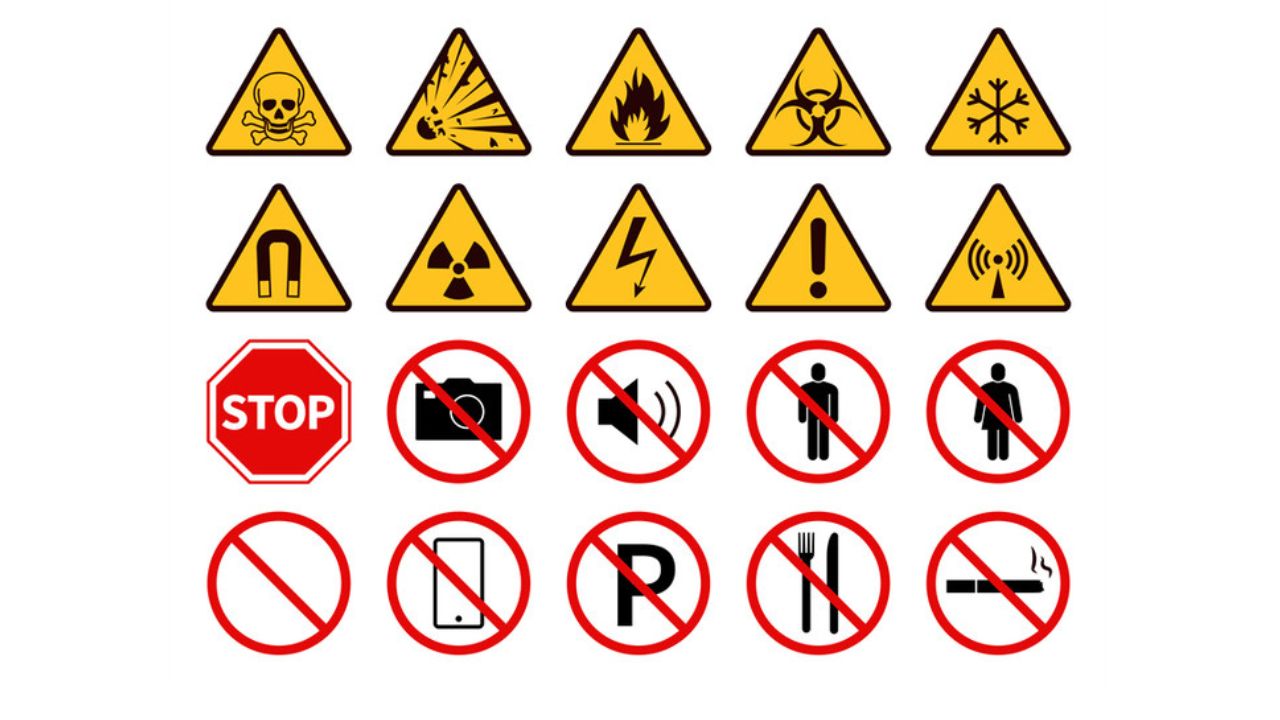Introduction to Regulatory Signs
Regulatory signs are vital components of our public infrastructure. They guide behaviors and maintain order in various environments. These signs serve as constant reminders for people to follow rules and regulations, thereby reducing the likelihood of accidents and mishaps.
While many associate regulatory signs primarily with roads, their importance spans beyond traffic management. These signs are crucial in airports, factories, and construction sites. For example, regulatory signs indicate areas where protective equipment is mandatory in factories, significantly enhancing workplace safety. In construction sites, they help maintain order and ensure that safety protocols are diligently followed, thus reducing the risk of workplace accidents.
Critical Types of Regulatory Signs
Regulatory signs come in various forms, each serving a unique purpose:
- Stop Signs
- Yield Signs
- Speed Limit Signs
- No Entry Signs
Each type of sign adheres to specific design and placement rules to ensure they are easily recognizable and understood by the public. Stop signs, for instance, are universally recognized by their octagonal shape and red color, making them easily identifiable even from a distance. On the other hand, yield signs are typically triangular with a red border and white background, signaling drivers to give way to oncoming traffic.
Standardizing these signs across different regions ensures consistency and clarity in communication. Whether on highways or in workplaces, regulatory signs play a critical role in ensuring safety and efficiency. This is especially important for international travelers who may not be familiar with local traffic laws but can still understand the signs due to their universally accepted designs and symbols.
Design Principles for Regulatory Signs
The design of regulatory signs follows strict principles to ensure visibility and clarity. Key elements include color, shape, symbols, and text. These factors are standardized to avoid confusion, particularly in critical situations. For instance, design principles focus on universal recognition to bolster effectiveness. This includes using high-contrast colors and reflective materials to ensure signs are visible even in low-light conditions.
Color, for instance, is used strategically: red for stop signs or prohibitions, yellow for warnings, and blue for informational messages. The shape also plays a crucial role, with octagons used for stop signs and triangles for yield signs, enabling immediate recognition even at a distance. Symbols are another important aspect, often used with text, to convey messages quickly and effectively, reducing the time required for interpretation.
Impact on Road Safety
Regulatory signs play a pivotal role in maintaining road safety. According to a U.S. Department of Transportation study, adequately placed and well-maintained regulatory signs significantly reduce traffic accidents. By enforcing compliance with traffic laws, these signs create a safer environment for both drivers and pedestrians.
One key example is speed limit signs, which help manage traffic flow and reduce the likelihood of accidents. Studies have shown that areas with clearly marked speed limits experience fewer accidents than areas without such signage. Similarly, stop and yield signs prevent collisions at intersections, one of the most common sites for road accidents. By providing clear instructions, these signs ensure that drivers know when to stop and when to proceed, thereby minimizing the risk of crashes.
Role in Enforcing Traffic Laws
These signs are instrumental in enforcing traffic laws. They provide clear instructions and restrictions, which law enforcement officers need to issue citations for non-compliance. This consistency helps establish order on the roads and reduces incidents of reckless driving.
For instance, no entry signs prevent wrong-way driving, a leading cause of head-on collisions. These signs ensure traffic flows smoothly and safely by clearly marking restricted areas. This not only helps maintain order but also aids in the efficient operation of roadways by reducing the points of potential conflict between vehicles.
Regulatory Signs in Other Sectors
Beyond roads, regulatory signs are essential in various sectors, such as construction, manufacturing, and healthcare. In construction sites, they warn workers of potential hazards and ensure compliance with safety standards. Signs indicating Hard Hat Area or “No Trespassing” are common examples that help maintain safety protocols.
Similarly, regulatory signs guide patients and visitors in healthcare facilities, reducing confusion and enhancing operational efficiency. Clear signage indicating patient wards, emergency exits, and restricted areas helps smooth hospital operations. In factories, regulatory signs indicate areas where protective gear is mandatory or specific activities are prohibited, significantly enhancing workplace safety. These signs ensure that safety protocols are followed consistently, reducing the risk of accidents and injuries.
Modern Technological Advancements
Technology has significantly impacted the realm of regulatory signs. Innovations such as digital and bright signs provide dynamic information and adapt to real-time changing conditions. These advancements enhance visibility and comprehension and improve compliance and safety. For example, intelligent signs can display different messages depending on the time of day or traffic conditions, offering more flexibility than traditional static signs.
Digital signs, for example, can display real-time traffic updates, weather conditions, and emergency alerts, providing drivers with up-to-date information to help them make better decisions on the road. This adaptability ensures drivers receive the most relevant and timely information, enhancing road safety. Advances in materials and lighting technology also mean that regulatory signs are now more durable and visible, further adding to their effectiveness.
Conclusion and Future Perspectives
In conclusion, regulatory signs are indispensable for public safety and operational efficiency. They are crucial in ensuring compliance with laws and regulations, reducing the risk of accidents, and maintaining order. As technology advances, the effectiveness and adaptability of these signs will only improve, offering even more significant benefits in the future.
Proper design, placement, and maintenance remain critical to harnessing their full potential. With ongoing innovations in materials and technology, regulatory signs will continue to be an essential component of public safety infrastructure for years.

 Fashion2 years ago
Fashion2 years ago
 General1 year ago
General1 year ago
 Trends1 year ago
Trends1 year ago
 Fashion11 months ago
Fashion11 months ago
 Fashion Today2 years ago
Fashion Today2 years ago
 Fashion2 years ago
Fashion2 years ago
 General2 years ago
General2 years ago
 Fashion1 year ago
Fashion1 year ago










